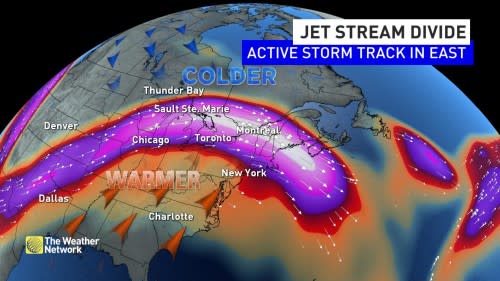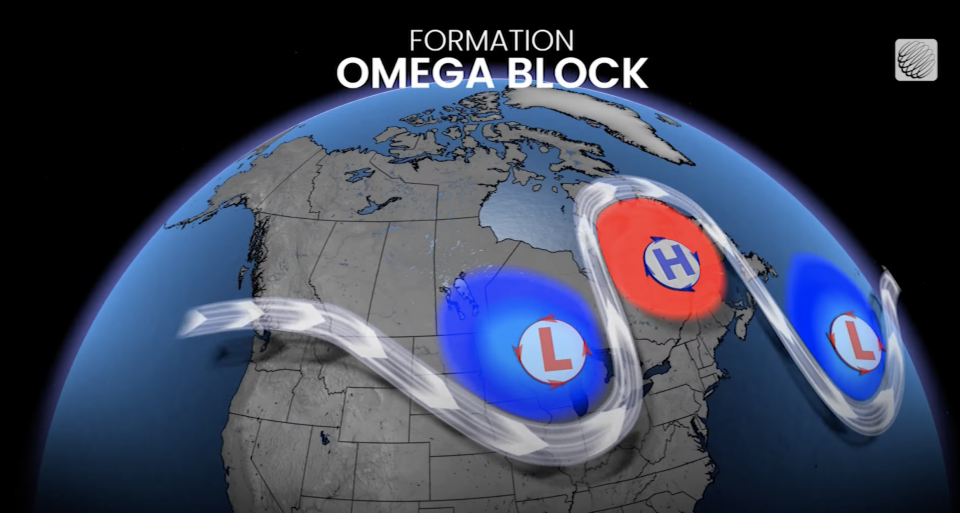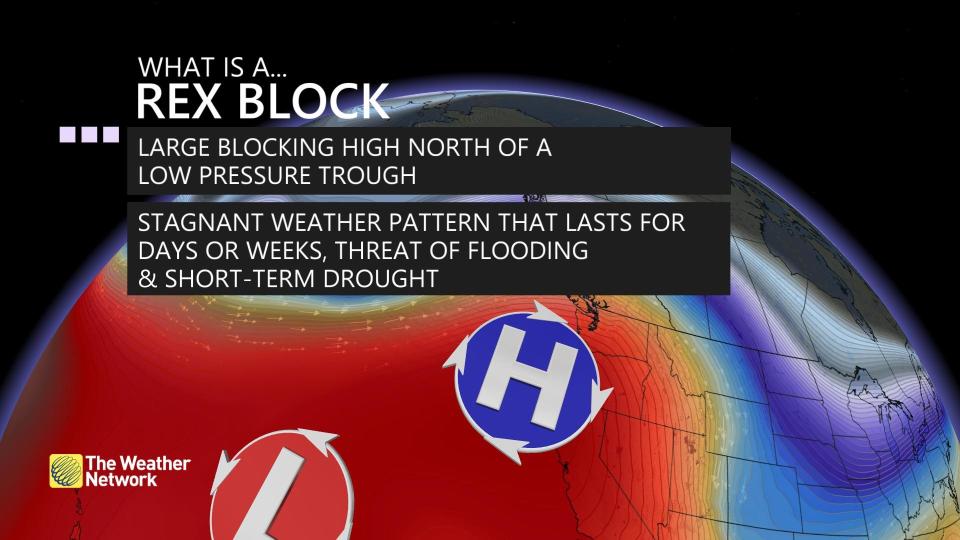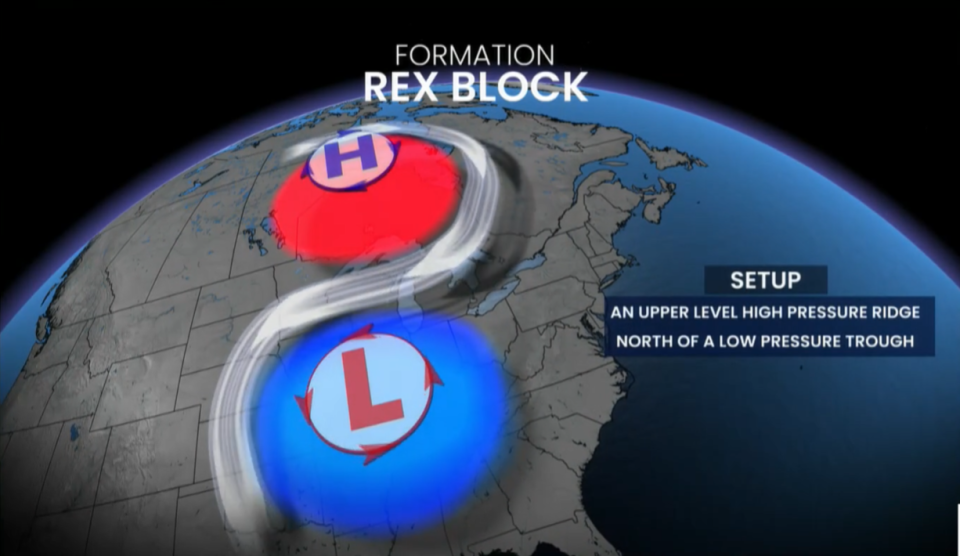How Omega blocks and Rex blocks can affect Canada's weather

Plenty of weather patterns have strange but fitting names. Brutal nor’easters can rapidly strengthen as bomb cyclones. Ferocious squalls lines can grow into derechos.
Storms aren't the only features that earned unique nicknames. A set of upper-level patterns known as Omega blocks and Rex blocks can have a dramatic and long-lasting influence on weather conditions across the country.
MUST SEE: Why extreme cold still happens in a warming world
Blocked patterns can bring widespread disruptions
A blocking pattern in the upper levels of the atmosphere is similar to a traffic jam on a highway.
The jet stream tends to move along at hundreds of kilometres per hour. Long-distance flights heading from west to east can save serious time and fuel by hopping into a healthy jet stream at cruising altitude.

But these ribbons of strong winds a dozen kilometres above the surface also twist and turn as they move along, dipping south as troughs and sweeping north as ridges.
Troughs force air to rise from the surface into the atmosphere, leaving stormy weather and below-seasonal temperatures in their wake. Ridges, on the other hand, force air to sink toward the ground, a setup that creates drier and warmer-than-usual conditions.
While troughs and ridges tend to keep on moving downwind, sometimes a group of troughs and ridges will line up just right to cause the upper-level pattern to get stuck in place. This atmospheric traffic jam creates a blockade that can force weather conditions to remain the same for days on end.
The orientation of these blocking features determines what kind of weather you’ll see as the stagnant pattern lingers overhead.
SEE ALSO: What is La Niña? And how does it impact global weather?
Omega blocks can stretch the entire length of Canada
One common and impactful pattern we often see in Canada is an Omega block. This setup earned its name from the pattern’s uncanny resemblance to the Greek letter Omega (Ω) on weather maps.

During an Omega block, we see a large ridge of high pressure build over the region with two smaller troughs flanking the ridge on either end—one to the west, and another to the east.
RELATED: Why extreme heat is one of the world’s deadliest weather disasters
Folks caught beneath the pesky and persistent ridge can see a long stretch of calm weather with above-seasonal temperatures. Meanwhile, communities stuck behind the troughs that hang out on either side of the ridge may see cooler and stormy weather for days on end.

When an Omega block develops during the winter, temperatures can soar dozens of degrees above seasonal beneath that ridge.
One of these vigorous blockades in early 2024 helped send temperatures as high as 21.1°C Saskatchewan—the province’s warmest January temperature on record.
WATCH: What is a Rex block?
Rex blocks are more complex—and more disruptive
The other type of blocking we often see in the skies above Canada is known as a Rex block. This pattern is named after Daniel Rex, an American meteorologist who published the first research paper on the pattern back in 1950.

DON'T MISS: What is the polar vortex? How it’s responsible for dangerous cold
A Rex block is more complicated and dynamic than an Omega block. This setup unfolds when a ridge of high pressure develops north of a centre of low pressure, almost resembling a backwards letter S on weather maps.
With upper-level winds contorted like a kink in a garden hose, Rex blocks can last for a week or longer in some extreme cases until another disturbance upwind forces the rigid pattern to finally break free.

Weather conditions vary widely for communities that find themselves under the influence of a Rex block.
Folks beneath the stubborn centre of high pressure will see an extended stretch of calmer and warmer weather, while the low-pressure system caught on the other end of the blockade brings a long spell of gloomy, rainy, and sometimes downright stormy weather.

